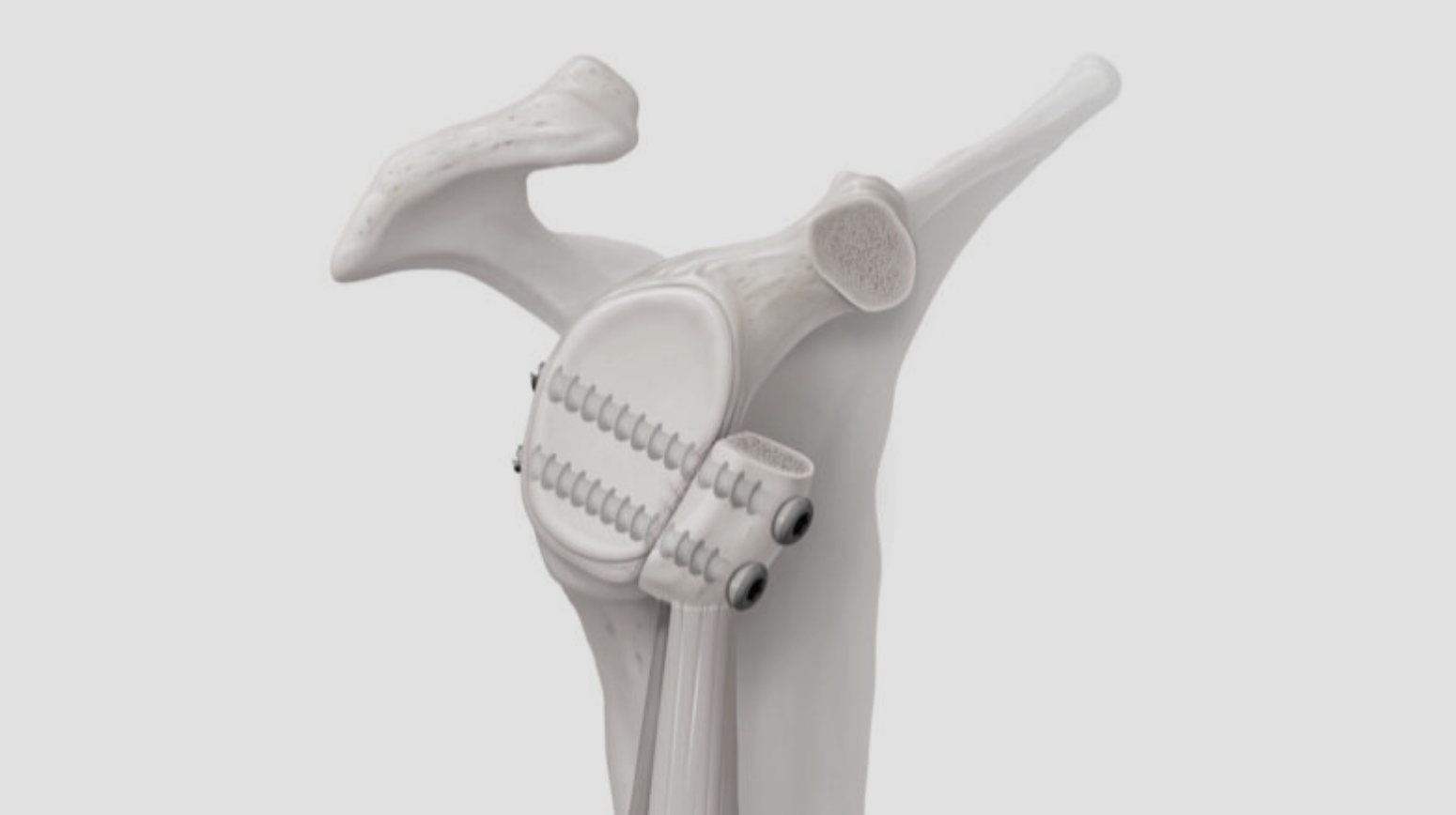Bone Transport Procedure.
Why might I need a bone transport procedure?
Mr Moverley will have recommended this procedure if you are experiencing recurrent dislocations of your shoulder, usually as a result of previous trauma. Mr Moverley will explain to you why an arthroscopic soft tissue procedure will not give you the stable shoulder you are looking for. This is usually because there has been extensive damage to the humeral head (ball) and glenoid (socket) of the shoulder or you participate in risky activities such as collision sports. Surgery is only indicated once an appropriate course of physiotherapy has been undertaken and symptoms persist to an unmanageable level.
What does surgery involve?
On the day of surgery you will be admitted to the ward or surgical admission area. You will once again meet Mr Moverley who will ensure you are still happy to proceed and that you understand the risks and benefits of the procedure. This is a good opportunity for you to ask any further questions. You will be asked to sign a consent form if you have not already done so.
You will meet your anaesthetist who will explain the type of anaesthetic you will receive. Bone transport procedures usually require a general anaesthetic (you will be asleep) and a nerve block so that the arm will be numb for approximately 12 hours post operatively. A shoulder replacement usually requires a hospital stay of 1 night depending on your medical history and home situation.
A bone transport procedure is procedure performed through a single incision measuring approximately 10-15cm made over the front of your shoulder. The wound is repaired with dissolving stitches and covered with a splash proof dressing. The wound should be kept dry for 10-14 days.
What is a bone transport procedure and which type is right for me?
All bone transport procedures address the fact that there has been bone loss from the front of the glenoid (socket). The procedure is referred to as ‘bone-transport’ as bone is removed from one part of the body and transferred to the rim of your glenoid to deepen the socket. There are three main types depending on where the surgeon ‘harvests’ the bone graft from:
Latarjet procedure: During this surgery your coracoid bone, which is adjacent to the shoulder joint, is detached and transferred to the rim of your glenoid to deepen the socket. The coracoid is fixed in place with 2 screws. The tendons attached to your coracoid also act as an extra dynamic sling to help stabilise the joint.
Advantages – Single incision, avoids the need for removal of bone graft from the hip, it is the most common bone transport procedure worldwide with strongest evidence base, the dynamic sling provides further stability.
Disadvantages – Higher risk of nerve injury, may not be suitable in certain conditions (e.g. epilepsy).
Eden-Hibernette procedure: During surgery a 2-3cm portion of your hip bone will be harvested through a separate incision. This is then transferred to the rim of your glenoid to deepen the socket and fixed in place with 2 screws.
Advantages – Can be used in epilepsy or if there has been a previous coracoid fracture, does not distort the anatomy around the shoulder.
Disadvantages – The hip donor site is often very painful post operatively and there is no dynamic sling effect.
Bone block allograft procedure: Allograft means tissue that has been harvested from a dead donor and prepared to allow safe use in humans. This is then transferred to the rim of your glenoid to deepen the socket and fixed in place with small screws.
Advantages – Avoids the need for graft harvesting and problems related to the donor site, can be used in epilepsy or if there has been a previous coracoid fracture, does not distort the anatomy around the shoulder. May be a good option in adolescents whose bones are still growing.
Disadvantages – The healing rates of the allograft bone block joining to the glenoid are slightly less than when your own bone is used. Some patients do not like the thought of donor tissue or may decline this procedure on religious grounds.
Mr Moverley will discuss with you the most appropriate method based on your age, activity level, amount of bone affected and your medical history. A basic example is shown below.

